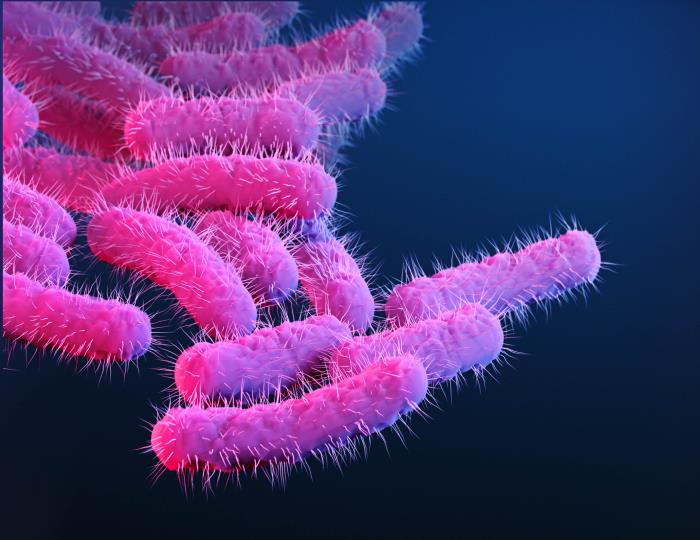In the offices of a biotech incubator hub just off University Avenue in St. Paul, Minnesota, the seeds of a vaccine that could prevent a common bacterial infection that affects millions of women and reduce infant deaths in low-resource countries are being carefully tended.
That's where Syntiron Managing Director Lisa Herron-Olson, PhD, and her colleagues are working on developing a vaccine that targets the iron receptor proteins of Escherichia coli and Klebsiella pneumoniae, two bacterial pathogens that cause most urinary tract infections (UTIs). The vaccine is designed to induce immunity by teaching the immune system to rapidly recognize proteins, such as the iron receptors, that all strains of E coli and K pneumoniae need to survive.
UTIs affect more than 150 million people—predominantly women—annually and are a primary driver of antibiotic prescribing worldwide. And for the estimated 25% to 30% of women who get repeated UTIs, that can mean several weeks, if not months, on antibiotics.
A vaccine that could prevent, or at least reduce, UTIs caused by E coli and K pneumoniae would be a huge medical advance in its own right, especially at a time when those pathogens are becoming increasingly resistant to first-line antibiotics.
Interrupting the UTI cycle
"The primary goal of our vaccine right now is to understand if we can prevent the cycle of recurrent UTIs," Herron-Olson told CIDRAP News. "And the reason why we really focused on that is because it's arguably the single largest reason why people use antimicrobials right now."
But the pathogens targeted by Syntiron's Alloy-EK vaccine are also two of the leading causes of neonatal sepsis, which causes roughly 2.5 million infant deaths each year, predominantly in low- and middle-income countries (LMICs).

Photo: Eric Tam / Syntiron
If given to expecting mothers—who are at increased risk of UTIs—in these settings, the vaccine in theory could prevent UTIs and help boost the immune systems of newborns against E coli and K pneumoniae, which can be transmitted during childbirth. While newborns are too young to be immunized, they would receive the antibodies in utero and through breast milk. This would not only provide a substantial health benefit to mothers and babies, but also reduce antibiotic use and the selection pressure that drives antimicrobial resistance (AMR).
It's that potential that led CARB-X (the Combating Antibiotic-Resistant Bacteria Biopharmaceutical Accelerator) to award Syntiron $1.7 million to help the company develop Alloy-EK as a maternal vaccine to help prevent neonatal sepsis in LMICs.
And while it still remains to be seen whether the vaccine will be effective, or safe, in people, Herron-Olson believes the potential of the Alloy technology—the platform for all of the bacterial vaccines Syntiron is developing—is enormous.
"It took time to figure this one out, and we're really excited about what we are seeing," she said.
Bacterial vaccine pipeline
Alloy-EK is among the 61 vaccine candidates identified by the World Health Organization (WHO) in a 2022 analysis of the clinical and preclinical pipeline of bacterial vaccines. The aim of that report was to fill the data gap in the vaccine research landscape and optimize the development and use of vaccines in reducing the spread of AMR. With the pipeline for new antibiotics as weak as it is, the WHO said, vaccines have become a "highly attractive" option.
That's because vaccines could help reduce or prevent the infections, both susceptible and resistant, that lead to antibiotic use and misuse. And along with reducing the burden of those infections, that could affect AMR in a number of ways, WHO technical officer Mateusz Hasso-Agopsowicz, PhD, explained.
"If you reduce the number of infections, and you reduce the antibiotic use that is associated with these infections, you also actually reduce chances of resistance being developed," he said. "This is because you have fewer infections, but also because you have fewer bacteria and you have less development and transmission of resistance genes between the bacteria."
"In terms of the very simple basics of how vaccines work, it's a prevention-is-better-than cure game," said vaccinologist Cal MacLennan, BM, BCh, PhD, founder and director of the Bacterial Vaccines Network (BactiVac), a group focused on accelerating bacterial vaccine development.
The proof of concept already exists. Among the groups of priority pathogens with vaccine candidates in different stages of development, the WHO report identified several with already licensed vaccines, including Streptococcus pneumoniae, Salmonella enterica serovar Typhi (typhoid), and Haemophilus influenzae type b (Hib). The vaccines targeting these bacteria, said MacLennan, have universally been very successful.

.jpg)


























